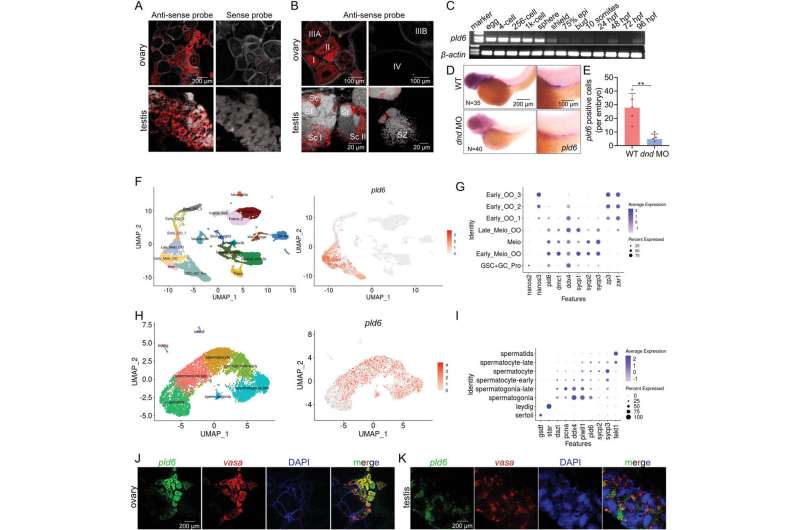Study examines germline‐specific regulator of mitochondrial fusion

Germline stem and progenitor cells (GSPCs), including primordial germ cells (PGCs) and germline stem cells (GSCs), generate various states of germ stem cells and then differentiate into spermatozoa and ova to produce offspring. GSPCs also self-renew to generate more stem cells. The cell fate determination of GSPCs is regulated by a multitude of mechanisms such as the changes at the level of translation, transcription, and epigenetic modifications. Germline-specific expression pattern is likely to be observed in these factors which are essential for GSPC self-renewal and differentiation.
In addition to their long-recognized role in energy production, mitochondria may also regulate cell fate determination. The balance of mitochondrial fusion and fission, namely mitochondrial dynamics, is tightly related to cellular physiology and even cell fate. However, it remains unknown whether there exists a germline-specific regulator of mitochondrial dynamics, and how it functions in germ cell development and gonadal differentiation.
Recently, a research group led by Prof. Sun Yonghua from the Institute of Hydrobiology (IHB) of the Chinese Academy of Sciences, in collaboration with Prof. Chen Zhenxia from Huazhong Agricultural University, demonstrated the novel mechanisms that germline-specific mitochondrial organization is necessary for the maintenance and differentiation of GSPCs. This study was published in Advanced Science.
By cross-analyzing the RNA sequencing results of zebrafish juvenile testes and ovaries, the researchers found that the mitochondrial organization process was significantly enriched by Gene Ontology analysis, and identified mitoPLD (zebrafish pld6) as a novel germline-specific gene related to mitochondrial fusion.
By generating pld6-knockout mutants, the researchers found that the mutants developed exclusively into infertile males with no sperm in testes. Zygotic disruption of pld6 did not affect the initial number of GSPCs, whereas the mutants had a small size in gonads at 25 dpf and the GSPCs failed to differentiate into early oocytes thereafter.
Additionally, the researchers discovered that the germ cells disappeared in the mutants after 35 dpf, eventually leading to masculinization and infertility of the mutants. Mitochondrial fusion in the pld6-depleted GSPCs was severely impaired, and the mutants exhibited defects in piRNA biogenesis and transposon suppression.
This study uncovered zebrafish Pld6 as a novel germline-specific regulator of mitochondrial fusion for the first time, and highlighted its essential role in the maintenance and differentiation of GSPCs as well as in gonadal development and gametogenesis, which shows the increase in the awareness of the relationship between mitochondrial dynamics and GSPCs cell fate determination.
More information: Ru Zhang et al, A Germline‐Specific Regulator of Mitochondrial Fusion is Required for Maintenance and Differentiation of Germline Stem and Progenitor Cells, Advanced Science (2022). DOI: 10.1002/advs.202203631
Journal information: Advanced Science
Provided by Chinese Academy of Sciences




















